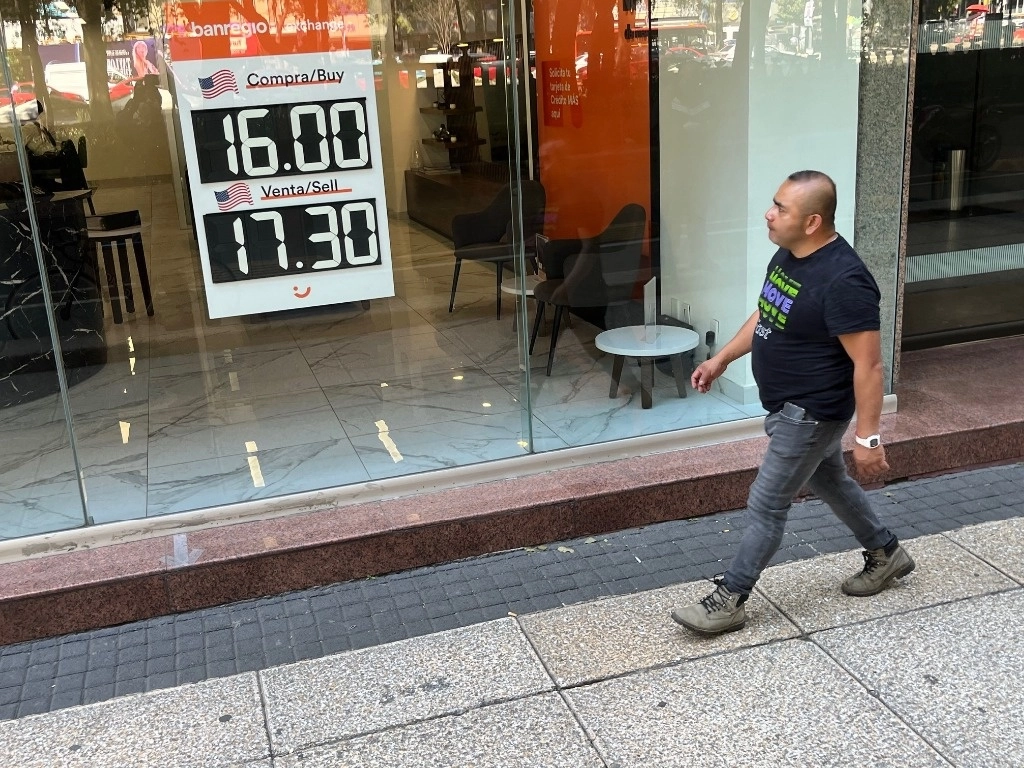Mexico City. In search of refuge, financial markets succumbed to last-minute losses this Thursday due to tensions in the Middle East, which sent oil prices skyrocketing, and due to statements by the Federal Reserve (Fed).
Almost at the final stretch of the day in American markets, the financial markets learned that Benjamin Netanyahu, Prime Minister of Israel, warned Iran about his country’s reaction in the event of an attack in retaliation for the assassination of one of the main military commanders. Iranians in Syria and 12 more people.
According to agency reports, Israelis are stocking up on food, water and generators for fear of an imminent Iranian retaliation to the attack in Damascus. For his part, Joe Biden, president of the United States, stated that his support for Israel will depend on what it does to protect civilians.
Given the escalation of geopolitical tension, risk aversion was activated, so the gains were reversed, leading the dollar to erase its losses towards the end of the session, to remain stable at 103,995 units, according to the DXY index. which measures the behavior of the US currency against a basket of six international currencies.
Thus, the Mexican peso was operating near 16.50 per dollar during the session, a new low of the year, but in the end it depreciated against the dollar 0.38 percent, to 16.6052 units per spot dollar.
According to data from the Bank of Mexico (BdeM), the exchange rate operated between a maximum of 16.6190 units and a minimum of 16.4950 units.
It coincided with the publication of the BdeM minutes, in which it confirms that the decrease in rates will be very gradual and will not be sequential.
Likewise, it emerged that Antony Blinken, Secretary of State of the United States, mentioned that the intention is for Ukraine to become a member of NATO, an event that could increase friction in the armed conflict with Russia.
Fed, think
The Fed did its thing, Neel Kashkari, president of the Minneapolis Fed, stated that it is possible that interest rates will not be cut this 2024 if inflation remains high and the US economy remains healthy.
What echoed the publication of the number of people who applied for unemployment benefits in the United States, which increased by 11 thousand, from the previous week’s upwardly revised value of 212 thousand, to 221 thousand in the week ending March 30 .
It is the highest amount in two months, placing it well above market expectations of 214 thousand. The result suggested a departure from a prolonged period of low initial claims records and contrasted with the strong jobs report released by the ADP yesterday, suggesting that tightness in the US labor market may be absorbing some of the delayed impact of high rates. of interest, explained analysts.
The labor market is, along with inflation, one of the variables most monitored by the Federal Reserve (Fed) when setting its monetary policy, hence the importance of the symptoms of strength or weakness that are reflected in the job creation figures. jobs that will be published this Friday.
After starting the session with a lull, oil prices extended their gains. June Brent futures rose 1.5 percent to $90.65 a barrel; while West Texas Intermediate (WTI) futures for May rose 1.4 percent to $86.59. Both mixes are at their highest levels since October.
On Wall Street, the Dow Jones fell 1.35 percent, to 38,596.98 integers; while the S&P 500 fell 1.23 percent, to 5,147.21 integers. The tech-heavy Nasdaq lost 1.40 percent to 16,049.08. All three major indexes reversed strong midday gains.
The Price and Quotations Index of the Mexican Stock Exchange (S&P/BMV IPC) managed to avoid falls, advancing 0.66 percent, equivalent to 379.37 points, to close at 57,882.76 units.
#Risk #aversion #activated #financial #markets
– 2024-04-15 16:15:37
